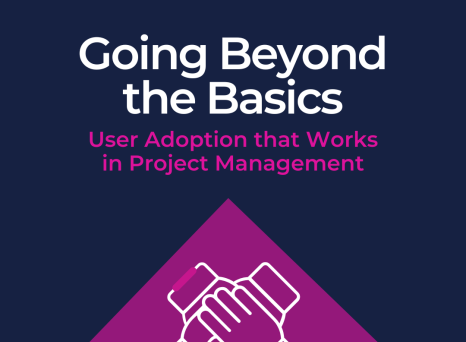Could the initiation stage of your project lifecycle work do with a tune-up?
When the costs of project failure are so high, it's worth putting best practices in place. If you don't, you risk adding to worrying statistics that suggest only 2.5 percent of companies successfully complete all their projects.
Bearing these facts in mind, let's explore the best practices for the initiation stage of your project lifecycle.
1. Establish objectives and deliverables
If you don't know where you are going, you will probably end up somewhere else.
Lawrence J. Peter
Every project must have clear goals that align with the wider business. So, you'll want to create a business case for your project with clear objectives.
To do this, you don't need to worry about technical details. You need to focus on moving the needle for the wider company goals.
For example, your project might entail improving the efficiency of your sales team by training them with new software. This might align with a wider business goal to double company revenue. This is exactly what you're looking for.
By tying the goals of your project to company wide objectives, you'll also find it easier to...
2. Get buy in from stakeholders
If you're looking to scupper your project before it begins, failing to get buy-in from those handling the purse strings is the way to go. Indeed, inadequate support from sponsors accounts for 26 percent of project failure.
Instead, you'll want to ensure everyone is on the same page. Here's how:
- Communicate in ideas and language they understand. So, speak to the business case and about objectives they're motivated by. Avoid acronyms and technicalities that won't make sense to them.
- Document plans and decisions so there's a record of what the C-suite approves of and what you're committing to. Decision-makers are busy people so don't leave it to them to write things up for you. Record everything and establish what's expected of the project.
- Follow-up and keep stakeholders in the loop as the project progresses. Provide regular, to-the-points status updates so they know how well things are going. This will keep them engaged and mean they're available to help you troubleshoot issues or overcome obstacles if needed.
3. Understand the context and define the scope
No project exists in a vacuum. Your project will doubtless need the support of others (whether internal or external to the company). And, there's inevitably a limit on the company resources you can take up.
This means you'll need to consider:
- Risks. What are the possible things that could go wrong?
- Dependencies. What resources and people are you depending on to make this a reality?
- Constraints. What limiting factors will affect the project? For example, budget or time.
To clarify the scope of the project, flesh out a timeline for the project, and what finishing the project looks like. Unless you know what ‘success' means, you'll risk scope creep, which affects 45 percent of projects, or, still worse, complete failure.
Could your project lifecycle work do with a facelift?
From getting stakeholder buy-in to scoping your project effectively, there are some proven best practices to deploy in the initiation stage. When you get these things right, you'll decrease the likelihood of bad outcomes that waste company resources.
Using modern platforms, like Planisware Orchestra, will make your life easier. For example, it brings all stakeholders together on one cloud platform to improve alignment and collaboration. It's also an accessible way to manage the full project lifecycle from a single point of truth.
If you'd like to learn more about how Planisware Orchestra could help you level up your product lifecycle, you can watch our explainer video here.


